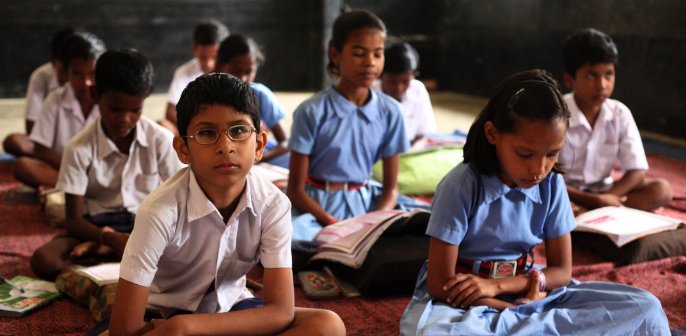+91 80 25586293
Projects
PROJECTS OVERVIEW
ActionAid India works in 25 states and 1 union territory of India, with a vision to A world without poverty, patriarchy and injustice in which every person enjoys the right to life with dignity.
INCLUSIVE COMMUNITIES AND SCHOOLS
since: 2012
-
- Name Of The Initiative
- Inclusive Communities and Schools
-
- Allied Organisation
- Aarth Astha
-
- Working together since
- 01/10
-
- States
- Delhi
-
- Villages Reached
- 2 (Govindpuri, LalKuan (Nadaan Basti)
-
- No Of People With Disability
- 120
-
- Families Indirectly Benefited
- 20,800
-
- Vulnerable Groups Reached
- Urban Poor, Informal Sector Labors, Muslims and Persons with Disabilities
-
- Name Of Communities
- Children with Disabilities
-
- Focus Areas Of Intervention
- Inclusive Education,Rights of the PWDs
-
- Basic Information about the initiative
- Aarth Astha has been working in slum (Govindpuri) and urban village (Lalkuan) since the year 2001 for the rights of disabled persons with specific focus on children with disability. In the initial years, the approach was in service delivery mode which over a period of time has evolved to advocating for rights of persons with disability and how communities can be made inclusive. The partnership of Aarth ASTHA with Action Aid began in the same year with a community based rehabilitation program in Lal Kuan (Mehrauli- Badarpur Road, Delhi). For the first three years, funding was given in the National Funding (NF) since 2005; ASTHA then entered into a longer-term partnership with three-year agreement under the Next Steps Program till 2007. Later in 2010, the partnership flowered for a long term commitment for ‘Making communities and schools inclusive’ in Govindpuri and Lalkuan areas. The focus is on inclusive education of the children with disabilities and marginalized groups.
-
- KeyWords
- Education; Right to education; Children; Child rights; Children with disability; youth empowerment
-
- Families Benefited
- 981
-
- Population Benefited
- 4,983
-
- Women Benefited
- 2,195
-
- Men Benefited
- 2,210
-
- Children Benefited
- 578




